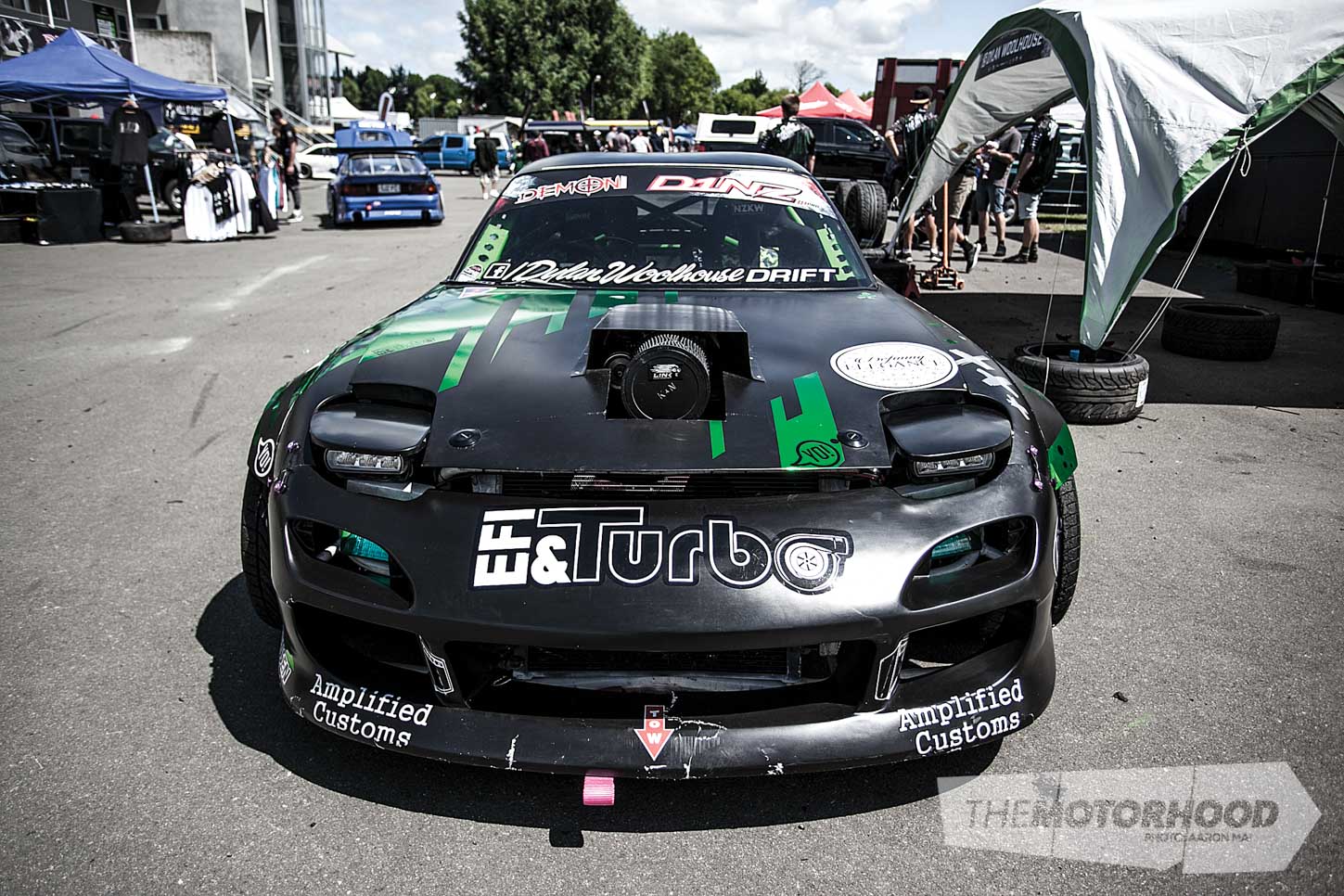data-animation-override>
“We take a look inside the national drifting championships stable of next-gen weapons”
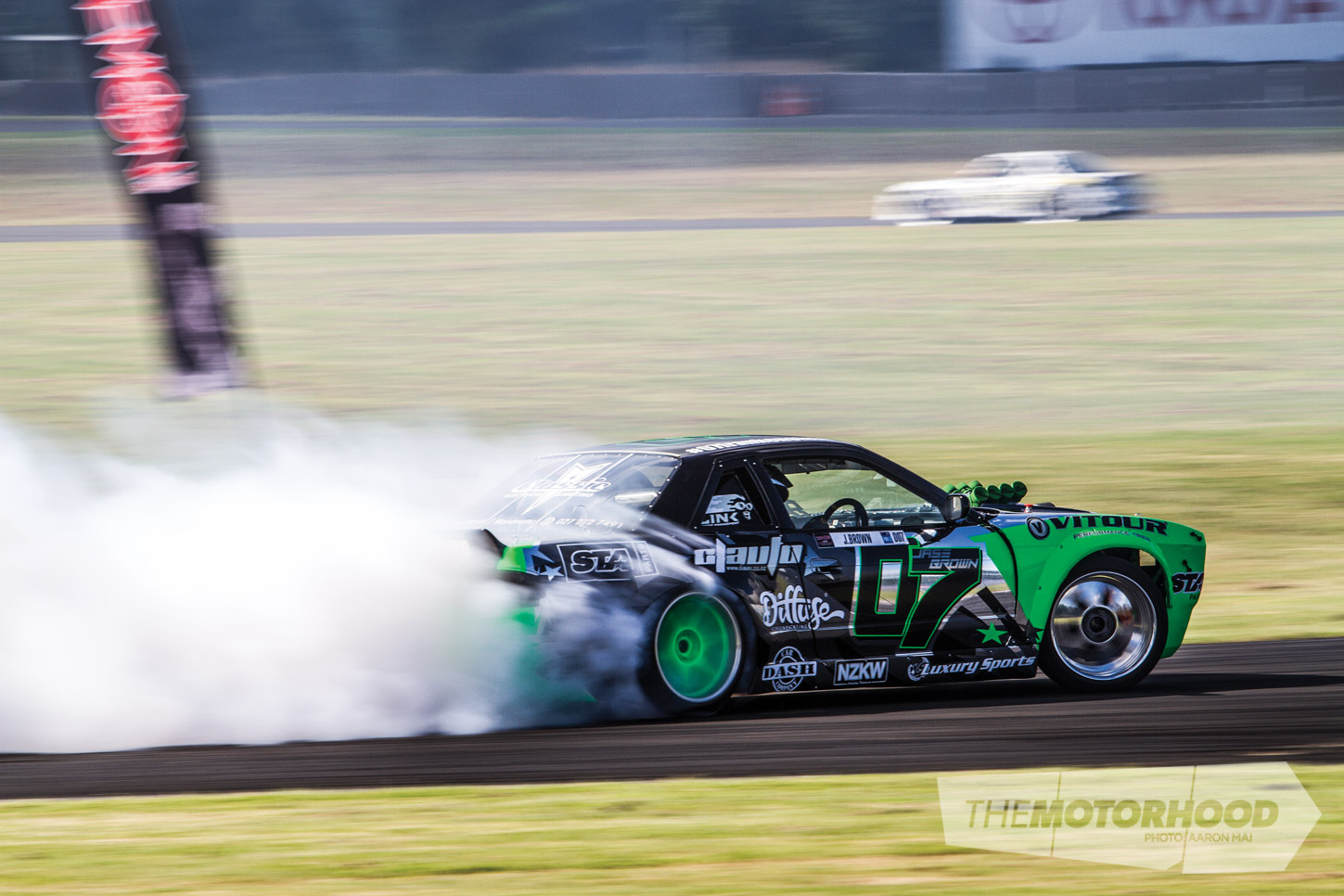
We are now reaching the midpoint of the Demon Energy D1NZ National Drifting Championship, with the newly announced Baypark round shifting from the custom carpark course to inside the 17,000-seat stadium, before another first as the championship heads to Hampton Downs Motorsport Park’s new club circuit, followed by the big one — the Puke monster.
But wherever the circus competes, Demon Energy D1NZ National Drifting Championship is home to a wide and often very wild array of weapons. With little in the way of rules that dictate what you can and can’t build, teams are increasingly stepping outside the box in the hope of finding that competitive edge over the competition.
The 2016/’17 season has seen more crazy creations than any in recent history, so we thought we would take a closer look at a few of the more interesting and unique builds, from the super high budget to a track car that began as a tow car — it seems the size of your wallet certainly doesn’t dictate how interesting or successful your build will be.
Jase Brown — S13
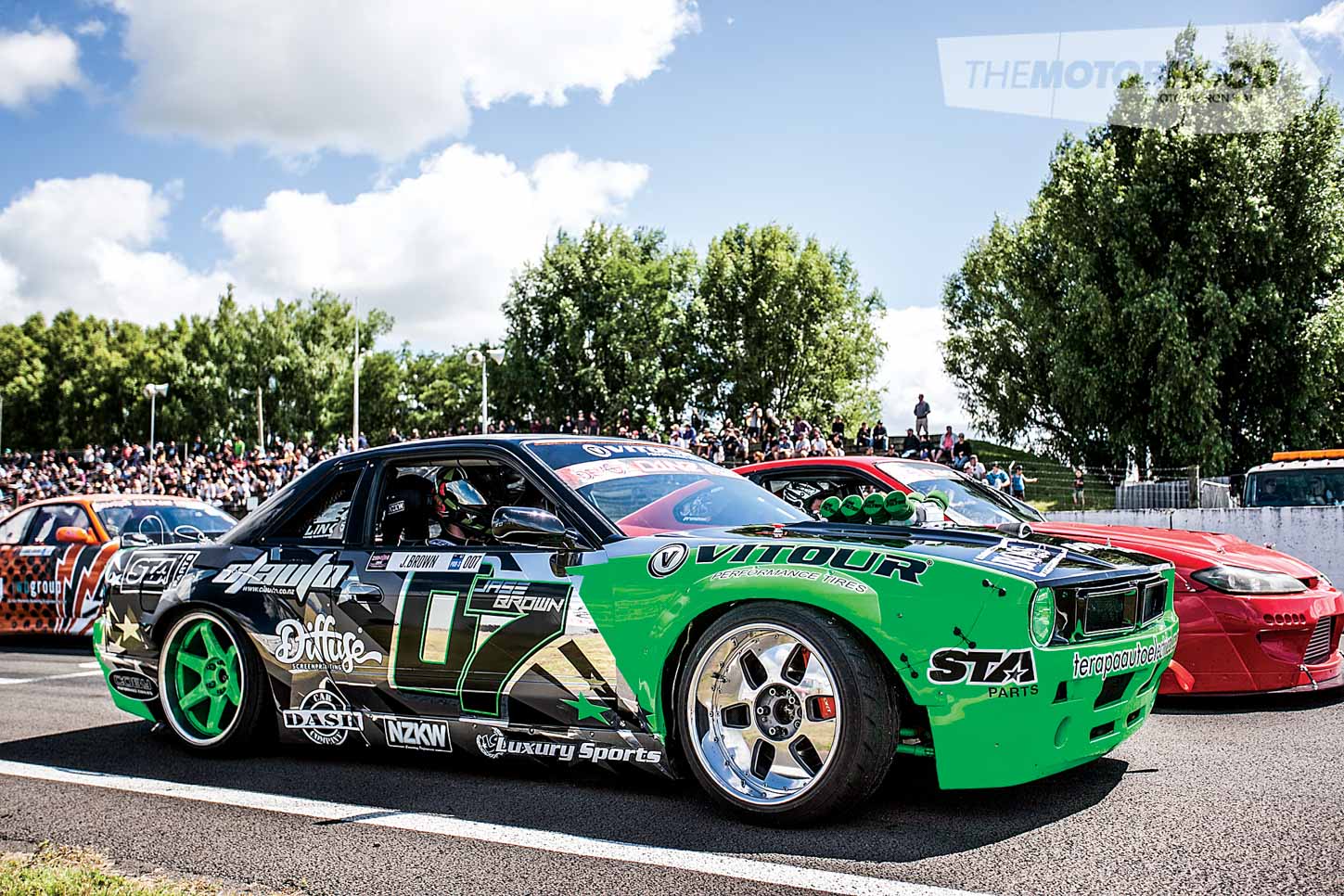
Arguably the car that made the biggest splash at round two was Jase Brown’s supercharged S13, making its debut. That’s because this very unique engine choice — a blown 1UZ-FE aka Lexus V8 — sticks loud and proud out of the bonnet. Jase is no stranger to running the combination, as he ran a similar and slightly more basic combo in his C34 Laurel for many years. Its drivability and instant throttle response, backed by the large amounts of torque shown by the C34, convinced Jase it would be ideal package for drifting.
Just how instant is that power? Try 800Nm from just under 3000rpm, and this is on a ‘test’ engine that is very close to stock. The real party will happen when the built engine goes in, as it’s similar to those 1UZ-FEs found in Super Stocks, which are capable of 670kW and 11,000rpm.
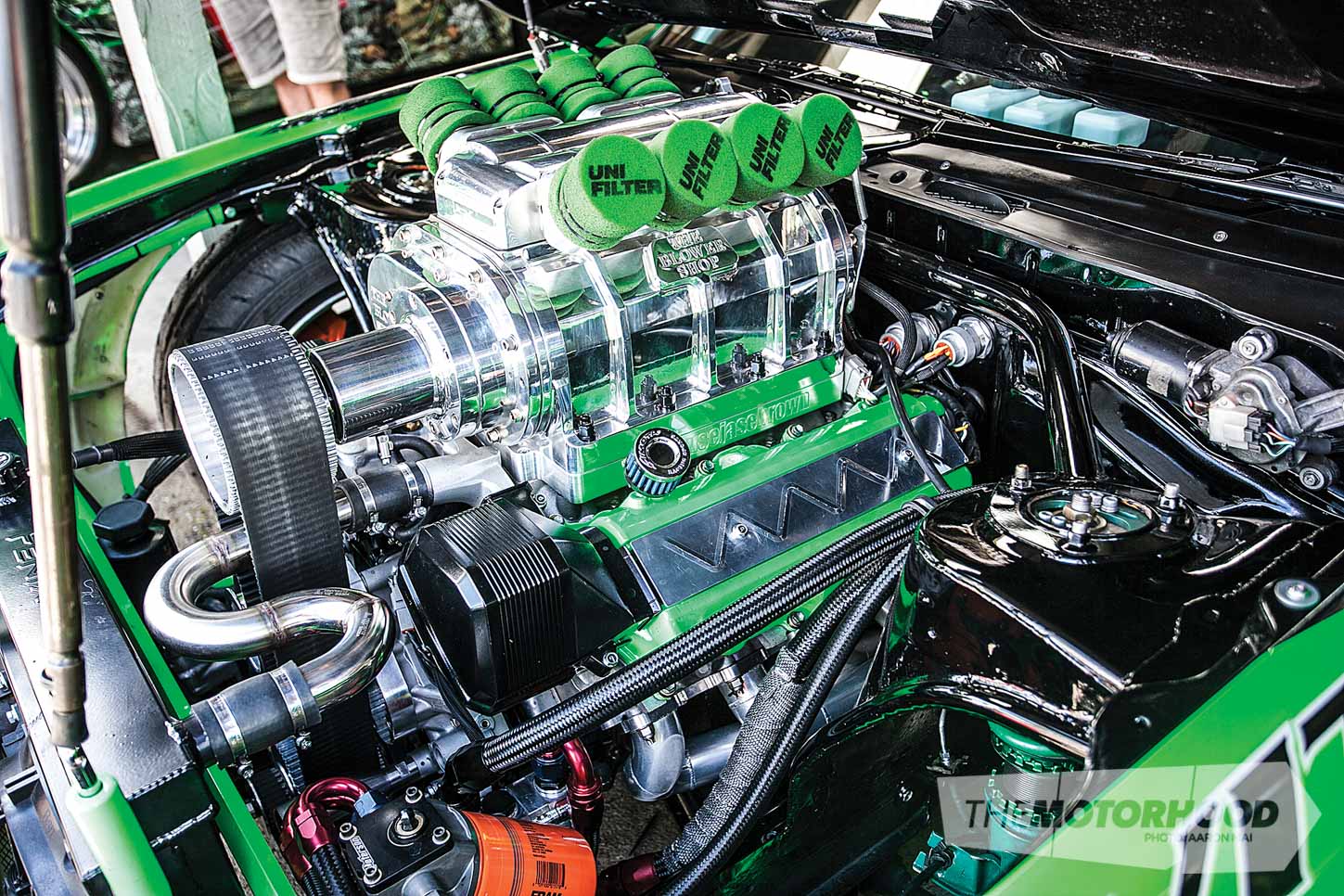
The billet Blower Shop 6-71 sits on a custom manifold and produces 1000Nm on 19psi, which Jase admits is pushing the limits on the near stock internals — some rod bolts being more-or-less the only development. With such impressive figures on that ‘test’ motor, we bet the built engine will be a very stout package. A custom Joe Blo Speed Shop ITB manifold with eight 1650cc injectors sits atop the 6-71, and below the blower is a CO2 total loss system the team has developed since round two as a way to combat the heat soak into the blower, which is caused by lengthy pre-battle waiting times on the grid. The size of the injectors means that at idle they are forced to basically starve the car, giving it an idle that has to be heard to be believed!
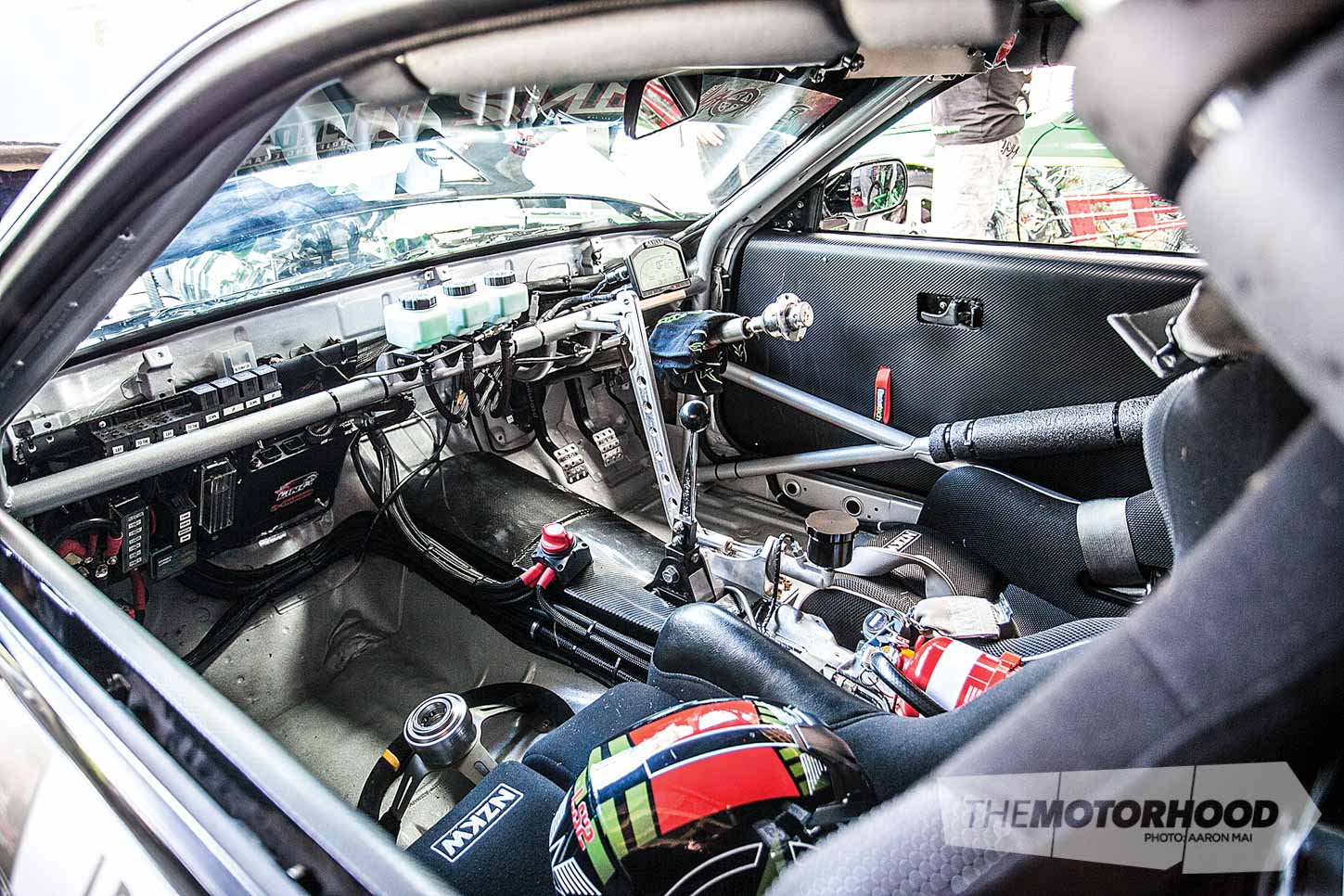
But this car is much more than just a nuts ‘Lecky’ V8 in a Silvia. The suspension package delivers near 80 degrees of lock thanks to Keto knuckles and 555 extended lower control arms, coupled with some secret mods the team wishes to keep that way. To achieve this angle, the front track sits in excess of two metres wide, using Tein Super Drift coilovers.
If the motor alone wasn’t enough to set the car apart on the grid, Jase opted to carry out the world’s first S14 Rocket Bunny Boss kit conversion. Thankfully the front is tube frame, meaning the fit wasn’t as hard as you might think, and the added width and height of the S14 front suited the engine better.
The livery is similar to Jase’s original S13, but his partner Hannah, who is a sign writer by trade, has really taken it to the next level, making the car pop with CL Auto vinyl.
Liam Sykes — FC
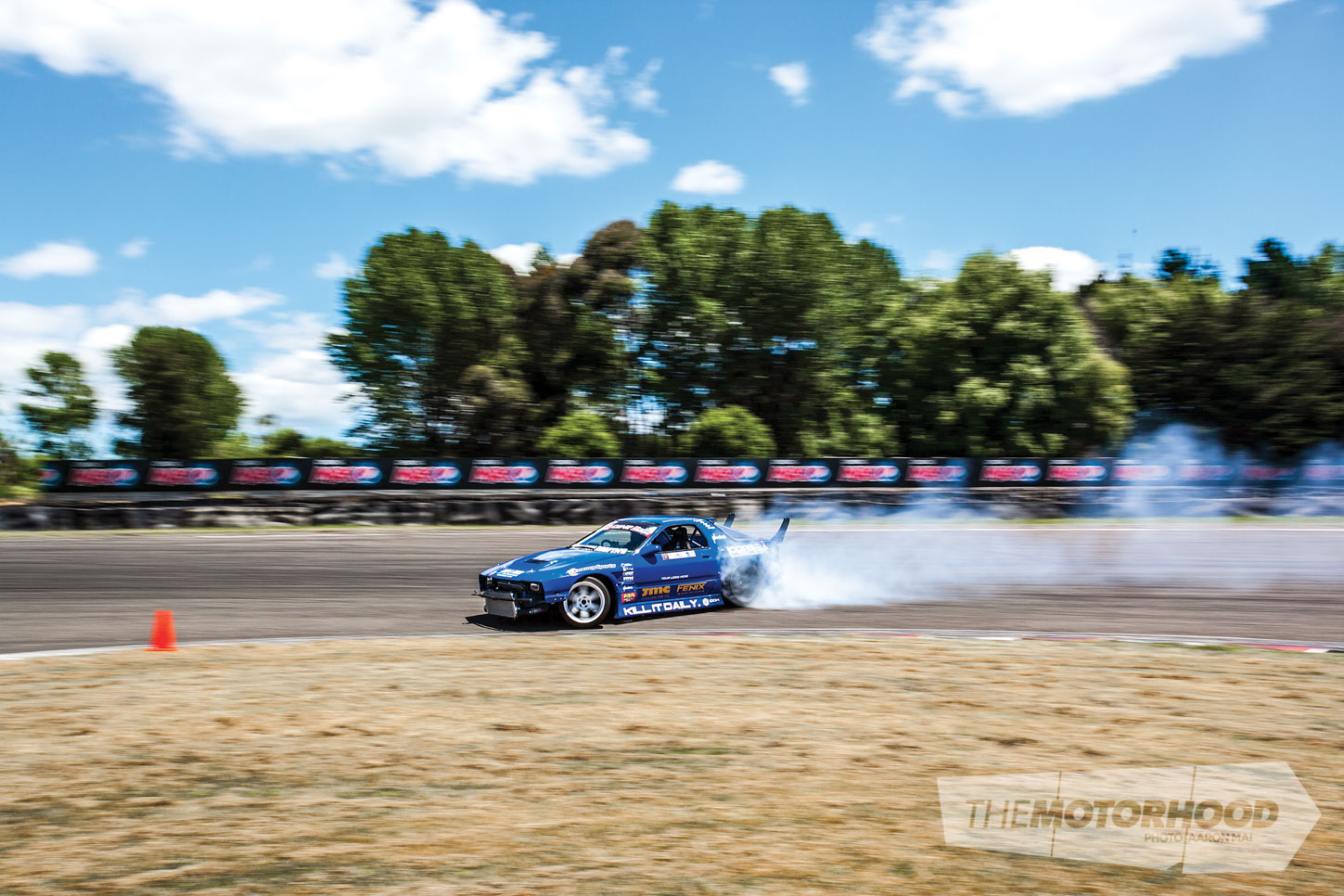
Demon Energy D1NZ Pro-Sport driver Liam Sykes is amid his rookie year in the national championship. He is no stranger to the sport, although he honed his craft in a more laid-back environment and behind the wheel of something a little less powerful than his FC RX-7.
So heading into his debut season, the team decided to step it up with the purchase of a battle-hardened ex-D1NZ FC RX-7 chassis originally built and campaigned by Matt ‘Chuckie’ Jackson.
The purchase of the RX actually came about as a joke between mates. Liam explained, “My best mate sent me the link for the FC and said he wanted to buy it, so I told him I was going to.” It’s surprising no blood was shed when Liam ended up with the rolling body. The 13B was long gone, and he wasn’t going to go back there after previous bad experiences, so he eventually decided on a 1JZ-GTE backed by a Tremec T56, Quarter Master triple-plate, and OS Giken LSD.
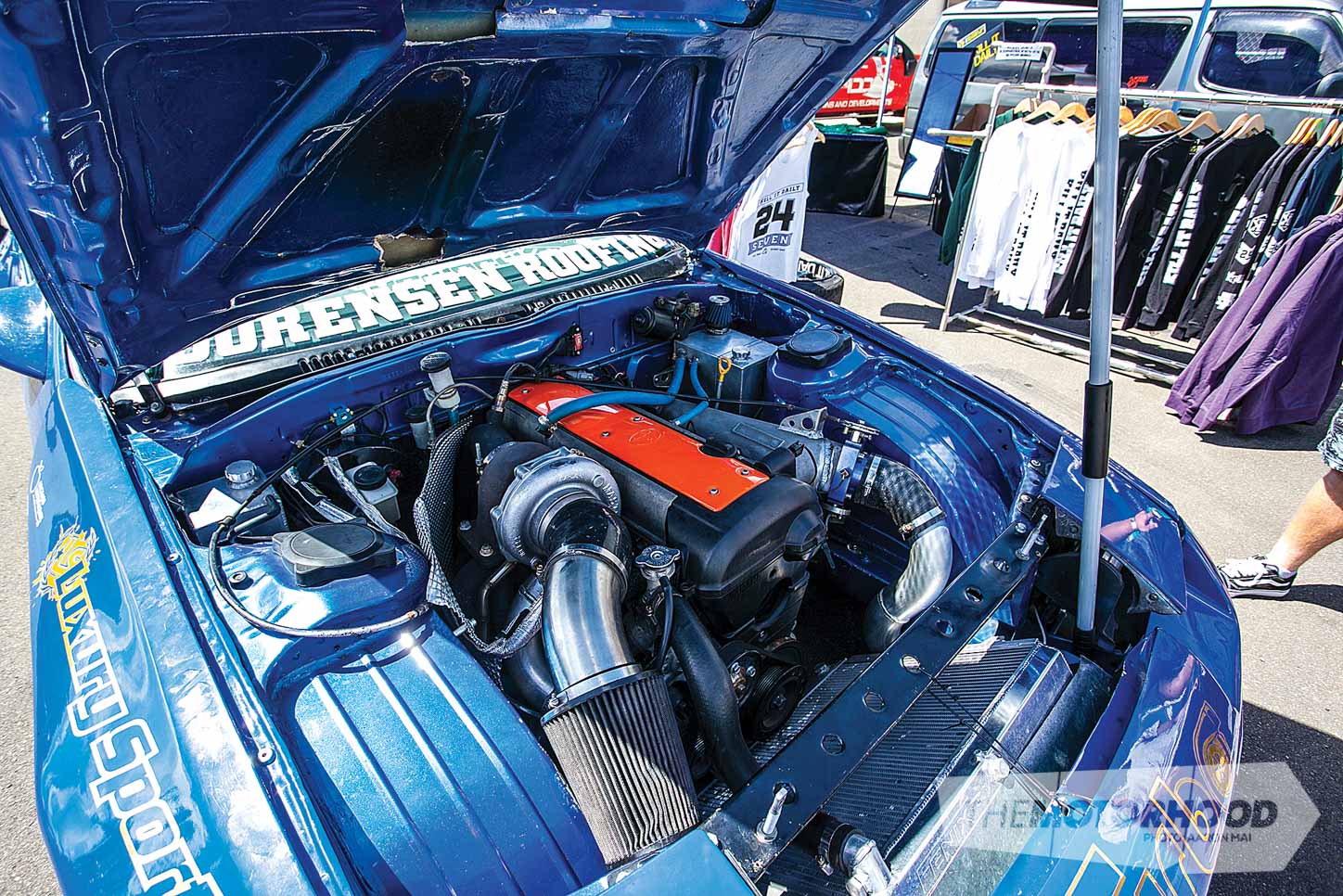
The 1JZ isn’t heavily modified internally, although it was rebuilt by Daryl at Efi and Turbo with ACL race bearings, ARP studs, and Cometic gaskets. The boost party consists of a Master Power R596 turbo with a .68 exhaust housing, TiAL 44mm wastegate, and unmuffled three-inch exhaust. There is also anti-lag ready to go, but as he is yet to test and learn to drive with this, it hasn’t been used in competition. Tuned by Daryl, the 1J makes 343kW and 550Nm, which is a huge step up from Liam’s previous SR20 set-up, though it’s proving just as reliable thus far.
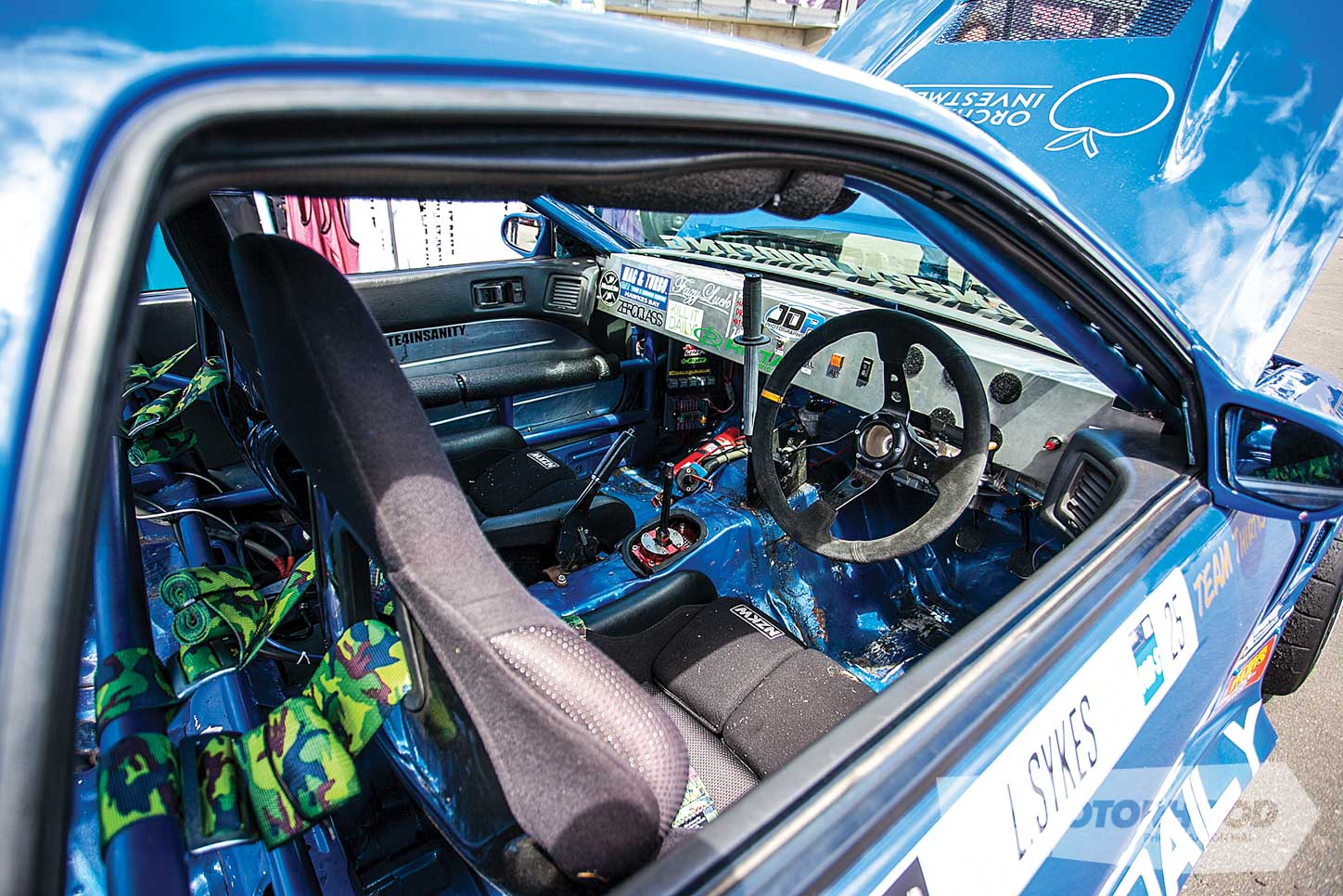
Luckily for the team, the chassis came somewhat dialled in from its time with Chuckie, who has plenty of drift car set up experience. Suspension-wise, the car runs Bilspeer knuckles, a Mazdatrix super angle kit, Super Now toe arms, extended lower arms, MMR solid bushes, and Mazdatrix rear camber links. The difference between stepping from the KE to the FC has been huge for not only Liam as a driver, but also the pit crew. The fact both cars use a similarly short wheelbase has made the transition smooth — but the two chassis capabilities are worlds apart. “The FC is so much easier to drive and to put where you want it, the KE would be fighting you the entire time. The hardest adjustment has actually been chasing in the smoke — it’s taking some time to get used to that.”
“The FC is so much easier to drive and to put where you want it”
Arthur Lee S15
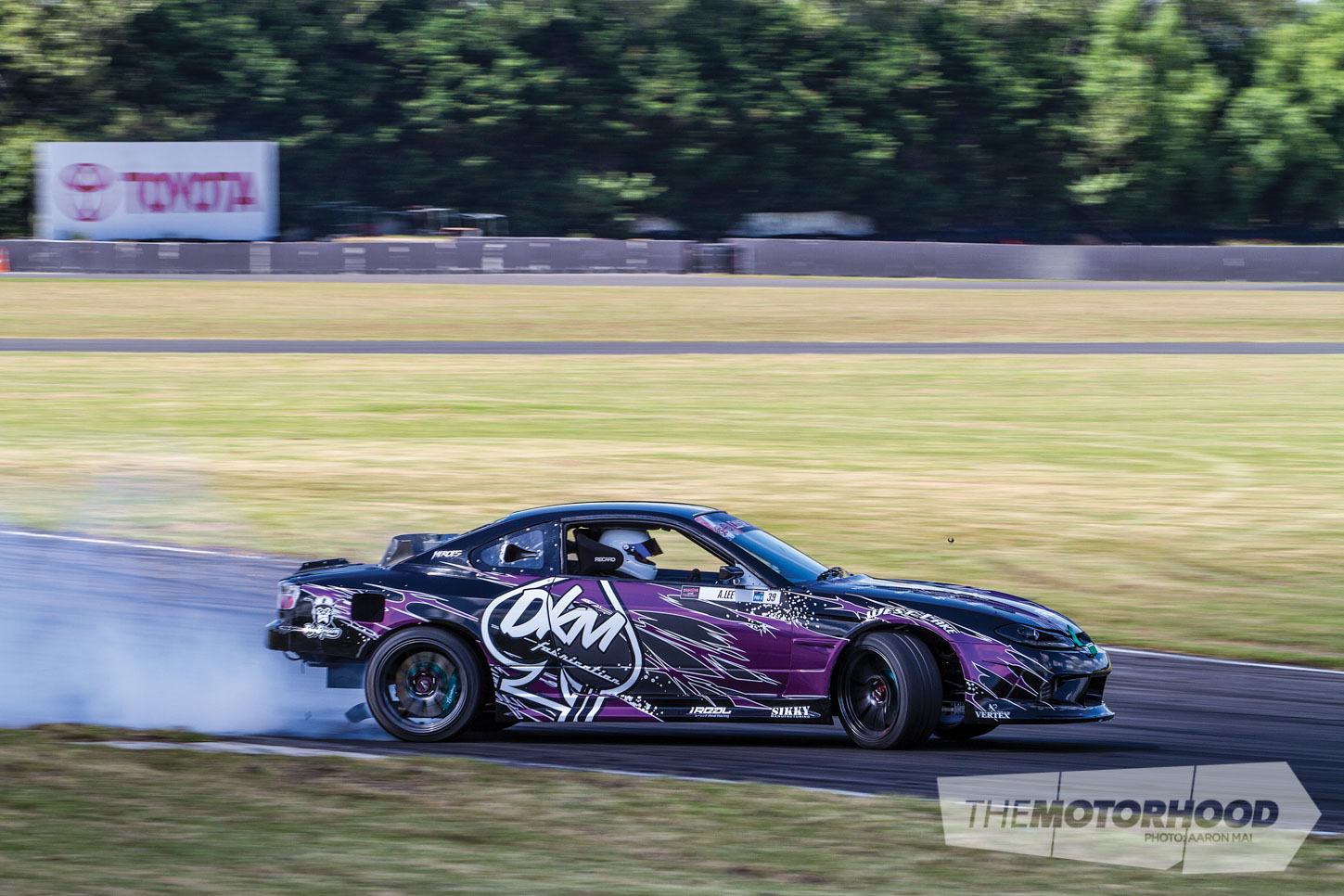
Another car to debut at round two of the National Championship at Manfeild Circuit Chris Amon was Arthur Lee’s much-anticipated RB28DET-powered S15 after its two-year build. We have followed this car’s build progress for some time as it took shape at DKM Fabrication, and the finished product certainly doesn’t disappoint. The parts list for this car would fill eight pages of this magazine if we went into extreme detail, but we will leave that for the main feature in a few issues’ time. Still, we must draw attention to the fit and finish DKM achieved — the detail is amazing.
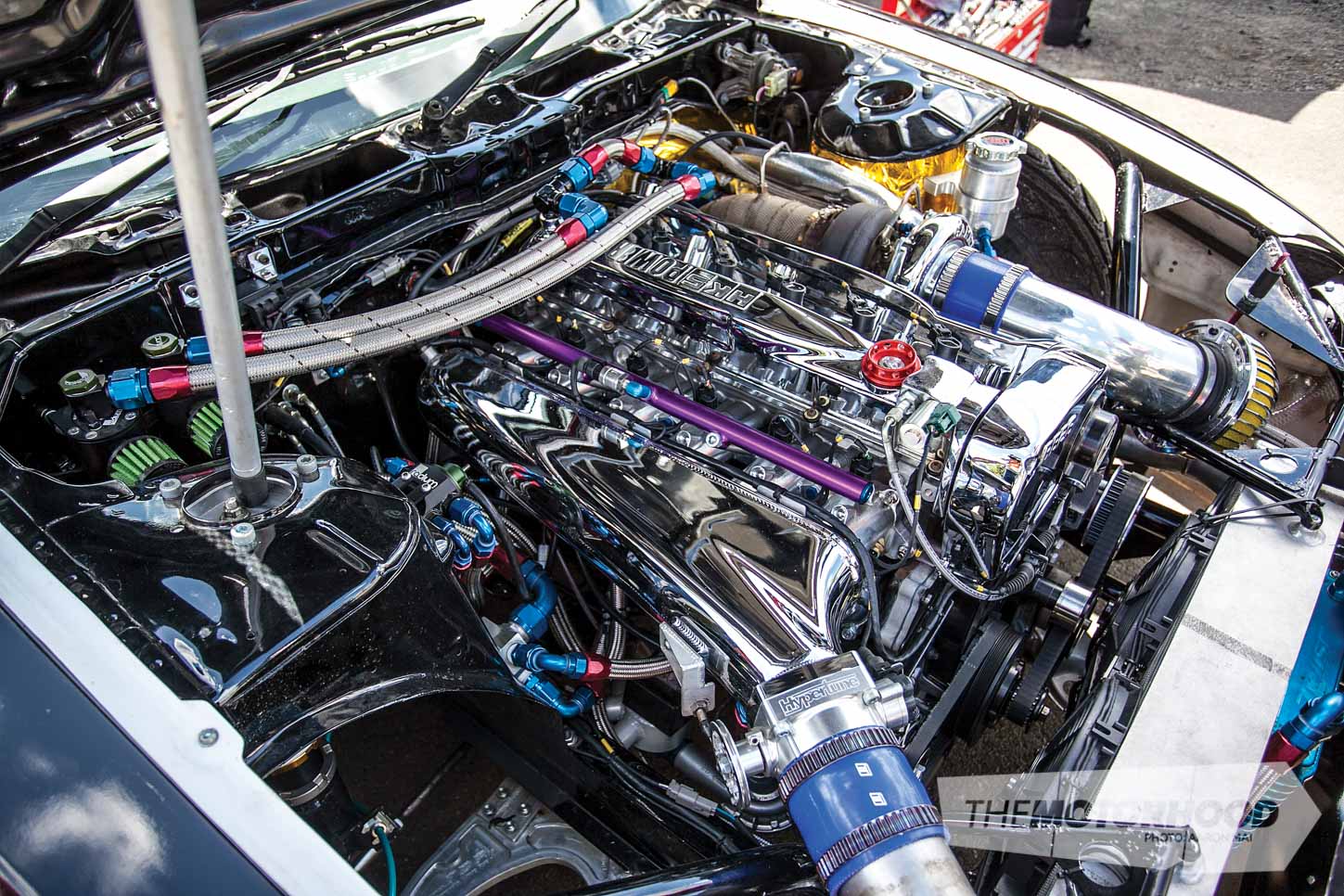
Arthur, who splits his time between New Zealand and China, started the project when he approached DKM with the idea of building a street car that was also capable of competing. But as the build progressed, so his knowledge of the extreme and often unique requirements of building a competitive yet reliable drifter increased. The result was the S15 you see here.
The powerhouse at the centre of it all is a built RB26DET with an HKS 2800cc stroker kit and a Tomei head with HKS cams. The boost side of the equation is handled by a Garrett GTX82R turbo with a Sinco manifold and stainless exhaust. The intake manifold is a Hypertune unit, with large single throttle body.
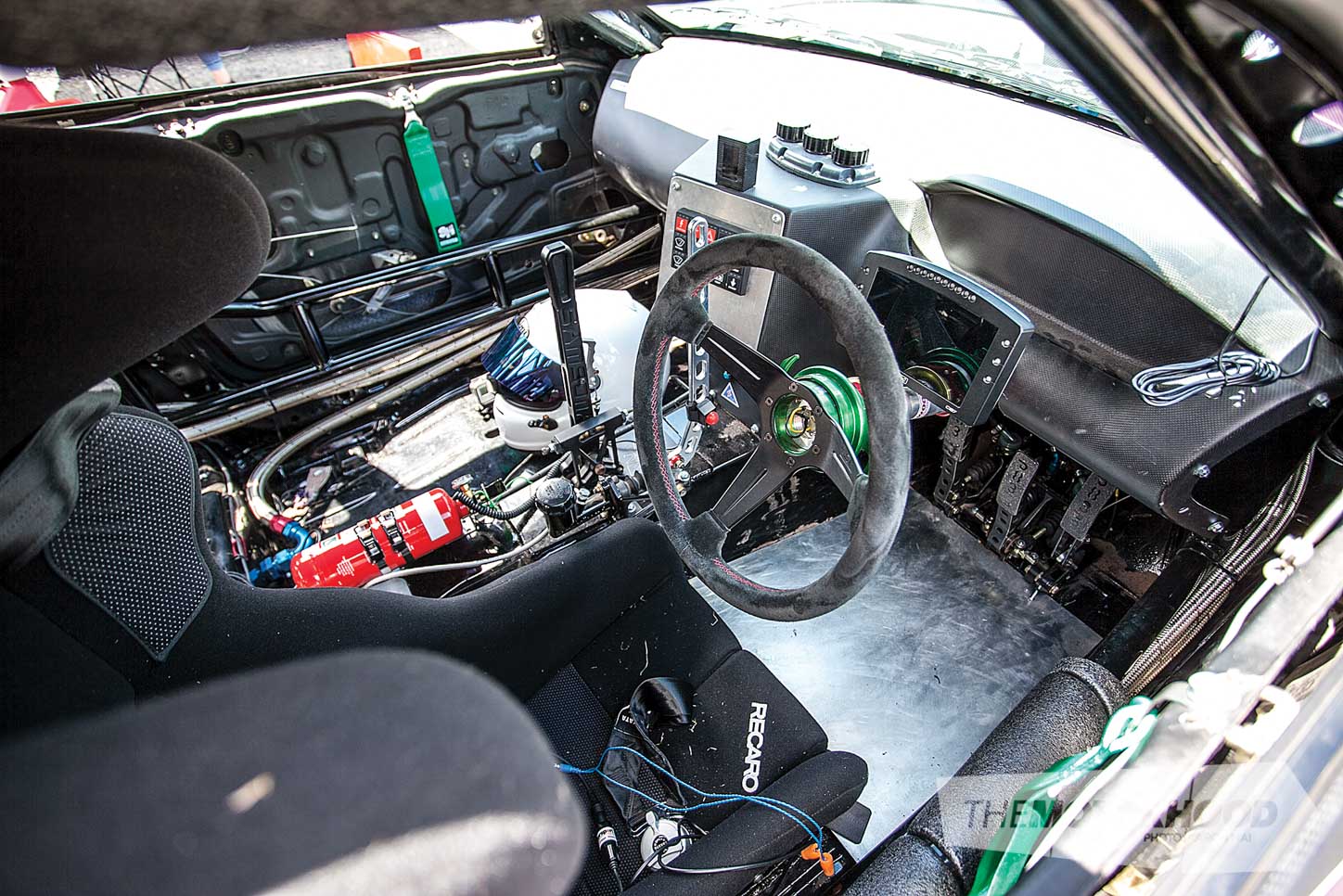
The electronics package is second to none, with a full Mil-Spec loom, MoTeC PDM, MoTeC C187 dash, and MoTeC ECU. There are full data logging capabilities and flat shifting for the Samsonas six-speed sequential, the first of its kind in D1NZ.
The RB produces around 597kW (800hp) on pump gas, chosen as Arthur prefers to keep the car on a maintenance-free fuel given how much time he spends out of the country.
The driveline is as bulletproof as the engine it backs, with an HKS triple-plate clutch, along with a carbon-fibre driveshaft, Winters 267mm Quick Change diff, and axles from The Driveshaft Shop in the USA. The rear subframe is a Sikky item, while up front it’s a mix of TDP and Parts Shop Max items.
Arthur is no stranger to drifting, having competed in China, but he plans to run the S15 here in D1NZ for a season or two before shipping it home.
The car showed huge potential on its first outing, although he was taking it easy to feel out the chassis. Expect this S15 to be a real contender once both chassis and driver are dialled.
Zac Green WC34
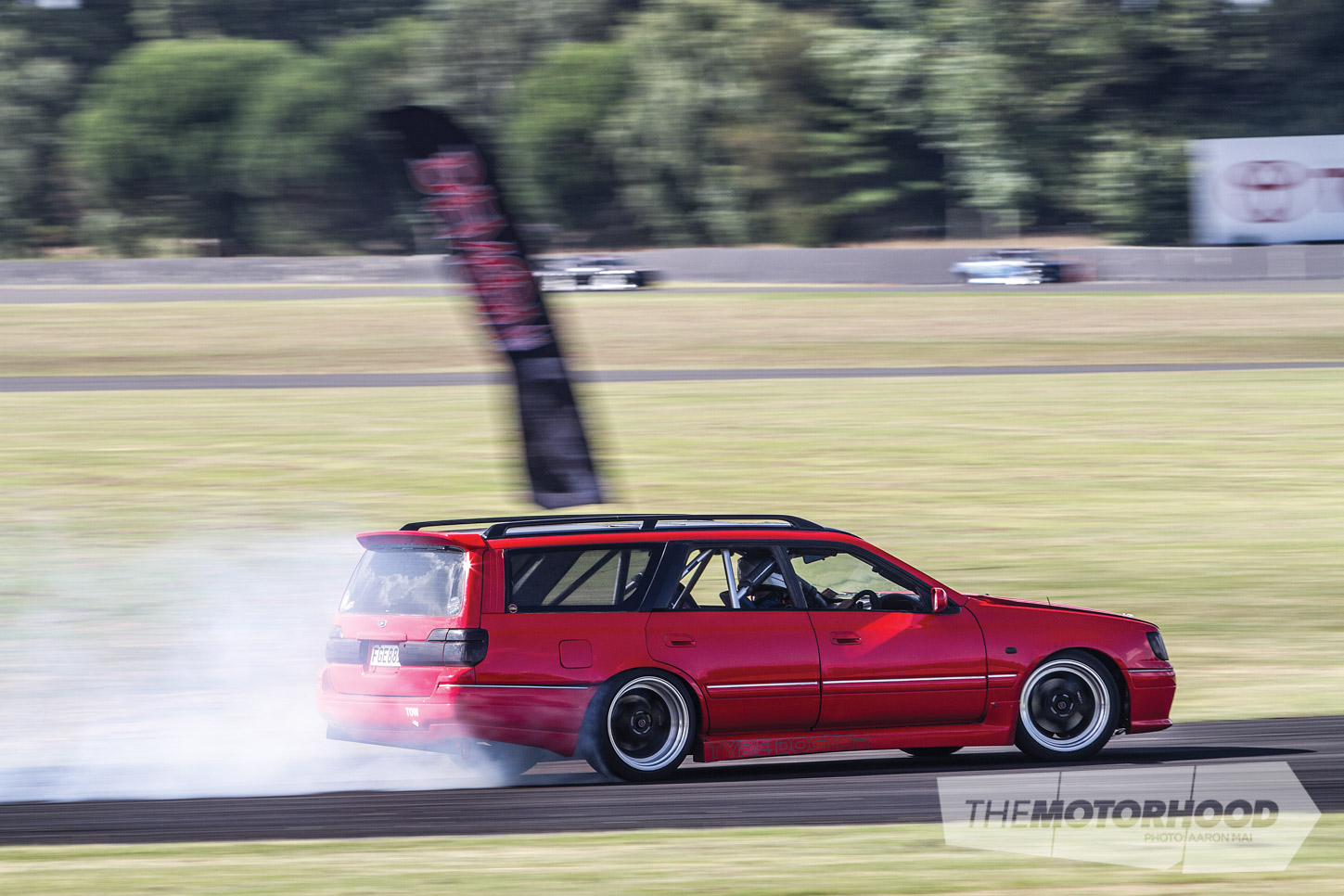
Station wagons are certainly not the first body shape that springs to mind when you think competition race machinery (old BTCC Volvos excluded), but that’s not to say they don’t make for one hell of a drift weapon when built right. Pro-Sport rookie — another to debut at round two — Zach Green had actually purchased the wagon for towing duties for a ex-D1NZ car he planned to buy. But a month into the ownership it was re-tuned, had a hydro handbrake and a lock diff, and could be found sliding around Hampton Downs. An altercation with a wall more or less wrote the wagon off from road duties, and it took up residence as Zach’s dedicated track car.
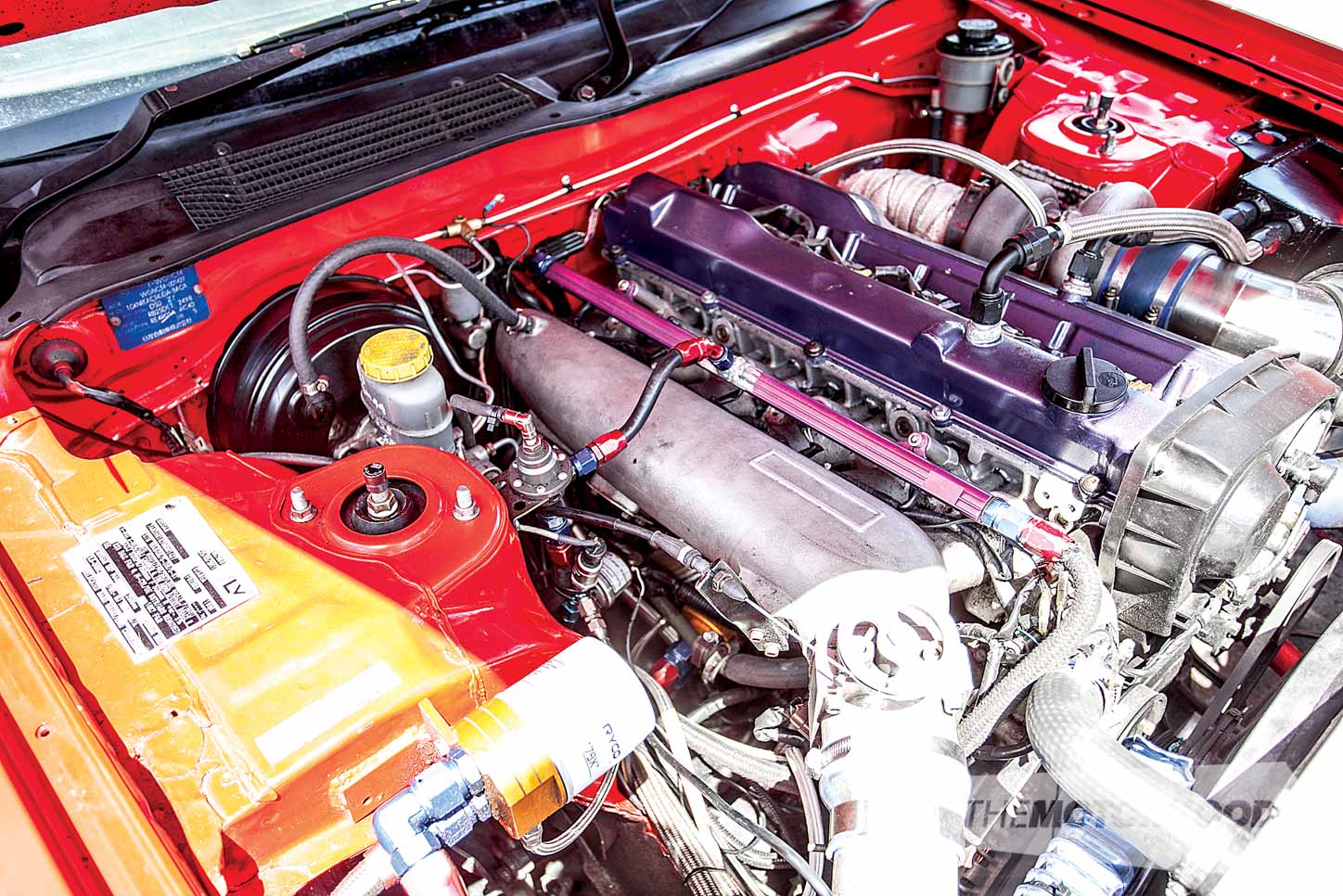
Drifting a Stagea is not without its unique set of challenges. First up, the wheelbase is long — about 60mm longer than a Cefiro — then there is the front GT-R suspension layout, aka 4WD. To combat a serious lack of lock, Zach runs a set of chopped knuckles to add about 10 per cent extra lock. Weight-wise the wagon is surprisingly light, coming in at under 1300kg.
The engine under the bonnet is an RB ‘big block’ — an RB30DET with R33 RB25DE head, stock internals, ACL bearings and an N1 oil pump. The Garrett GT35 delivers 340kW at a very conservative 6000rpm, and following his first competition round Zach will drop in a new set of cams to help with mid-range torque.
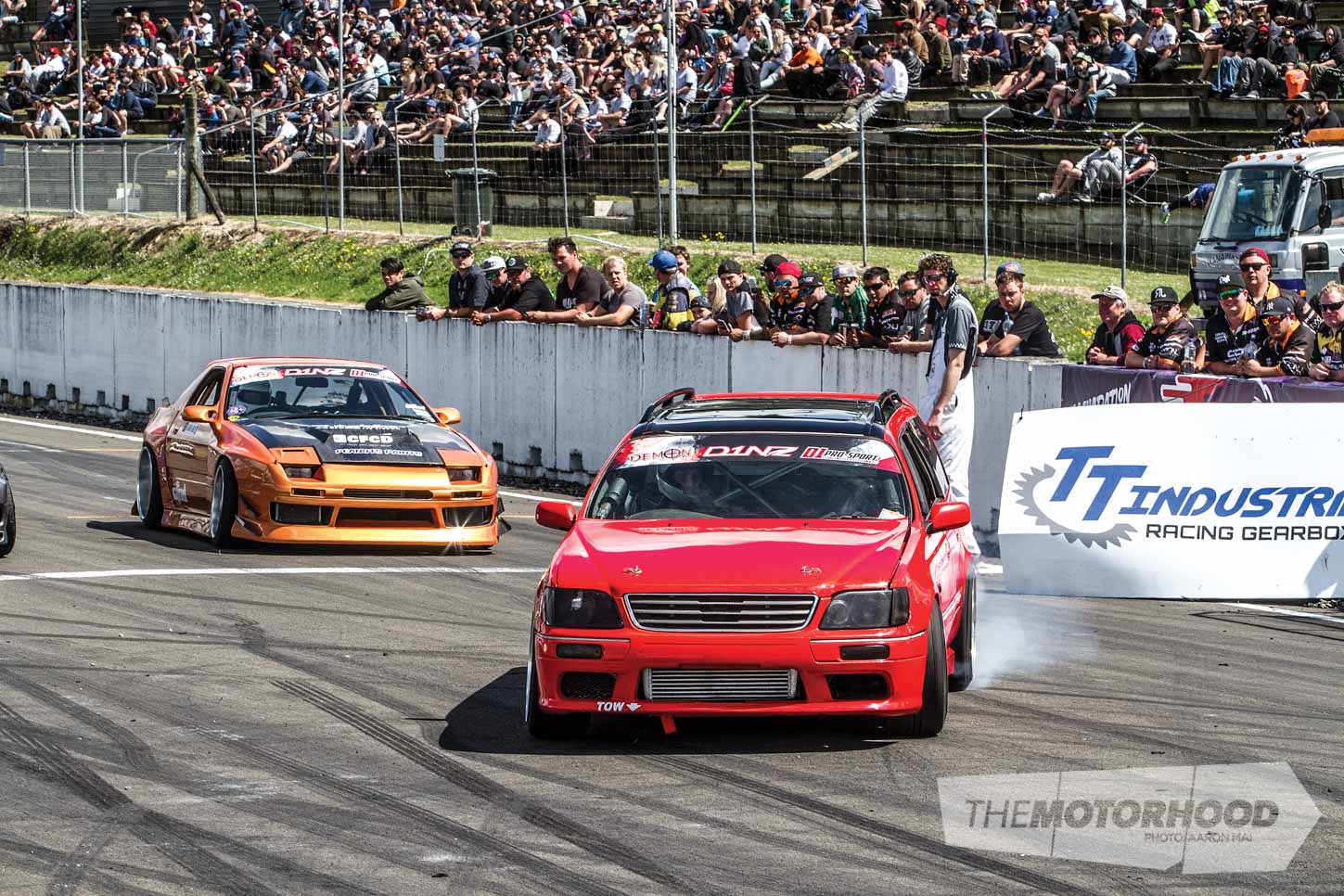
The car features a very mild-looking exterior, but what lies beneath the skin is firmly race oriented, with light-impact repair and safety a major factor for Zach after that crash at Hampton. The tube fram front built in his shed is easily unbolted and replaced, while parts like the fuel cell, oil cooler, and radiator have all been positioned well out of harm’s way.
You can expect to see Zach swangin’ off the G-Tech wheel for the remainder of the season as the team works at perfecting the set up, but he is confident — “If Fanga can drift a Commy, I can surely drift a wagon.”
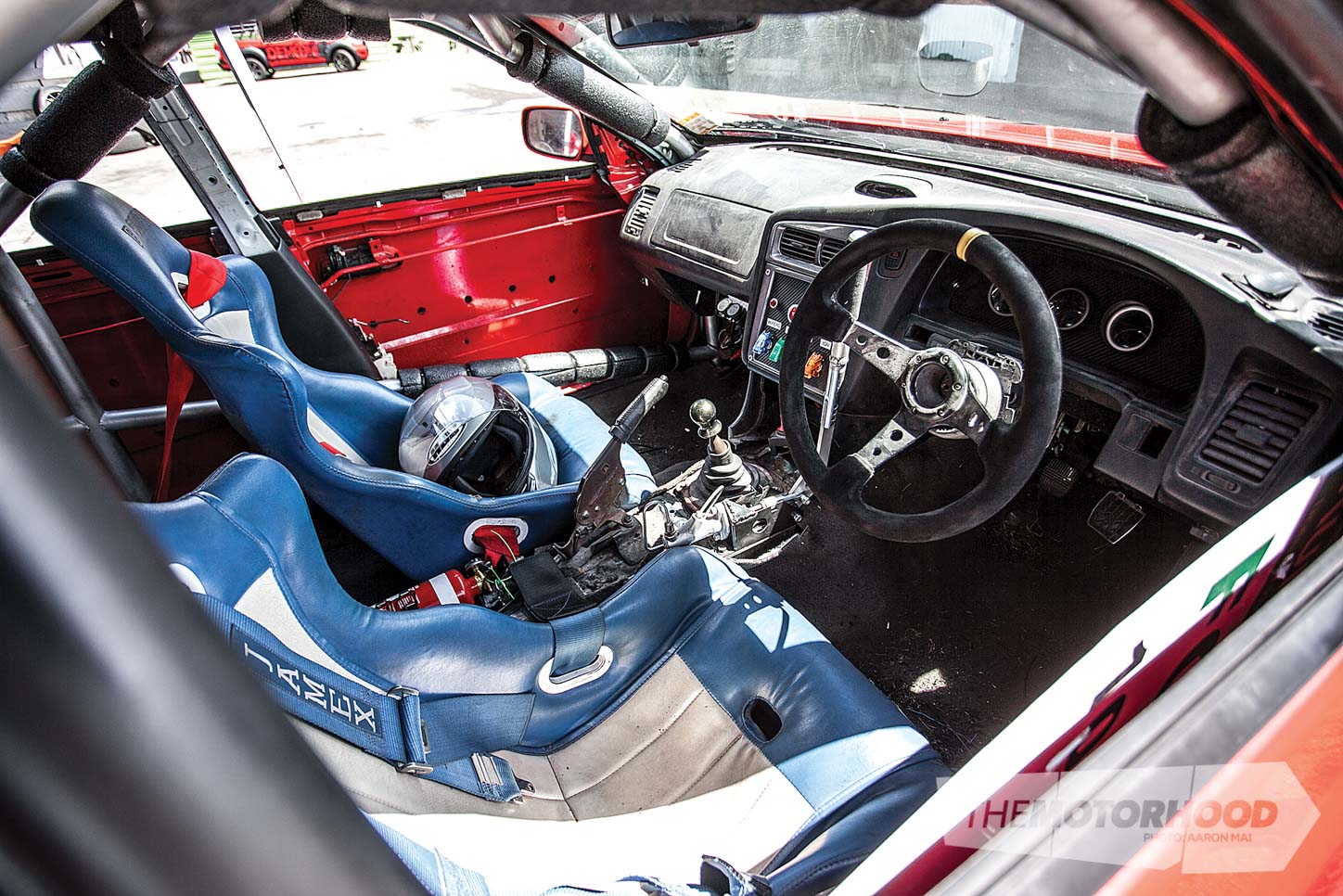
Having a wagon as a track car is not without its benefits. The rather large rear compartment comes in handy during transit, as it can hold plenty of tools and tyres.
Dylan Woolhouse FD
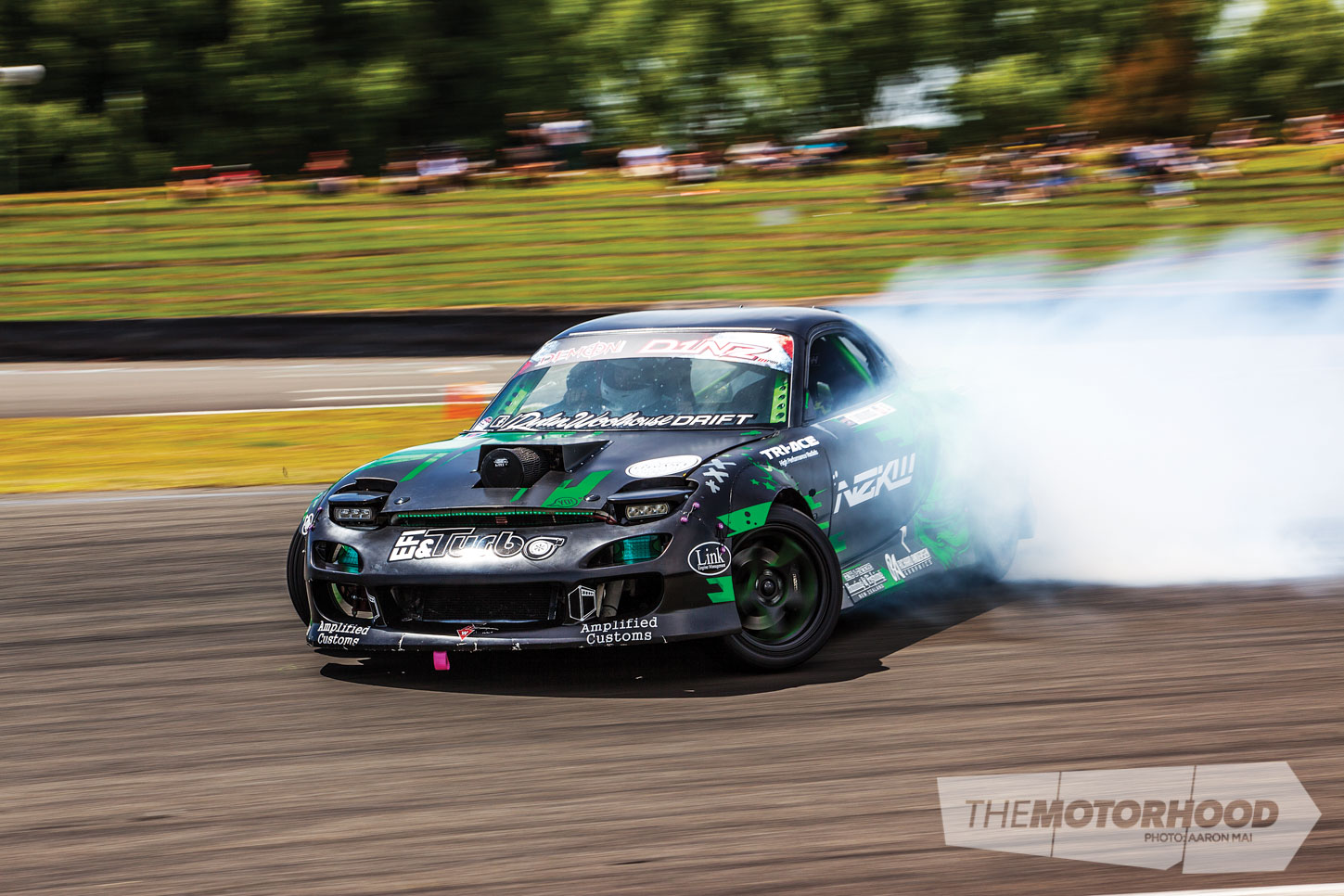
Last time we checked in with Dylan Woolhouse, his all-new build had just been tested and he was looking forward to seeing how it worked in a competition. The chassis is the ex–Rene Richmond FD RX-7 which has received the supercharged LS2 from the C35 Laurel Woolhouse successfully campaigned in Pro-Am. The chassis switch saw the car lose 400kg — the RX-7 weighs in at 1100kg, which was a big factor in making the swap. Efi and Turbo has been a big part of the new build, carrying out the lion’s share of the fabrication and mechanical work, including developing an angle kit which in testing gave Dylan a good boost in confidence heading into the season.
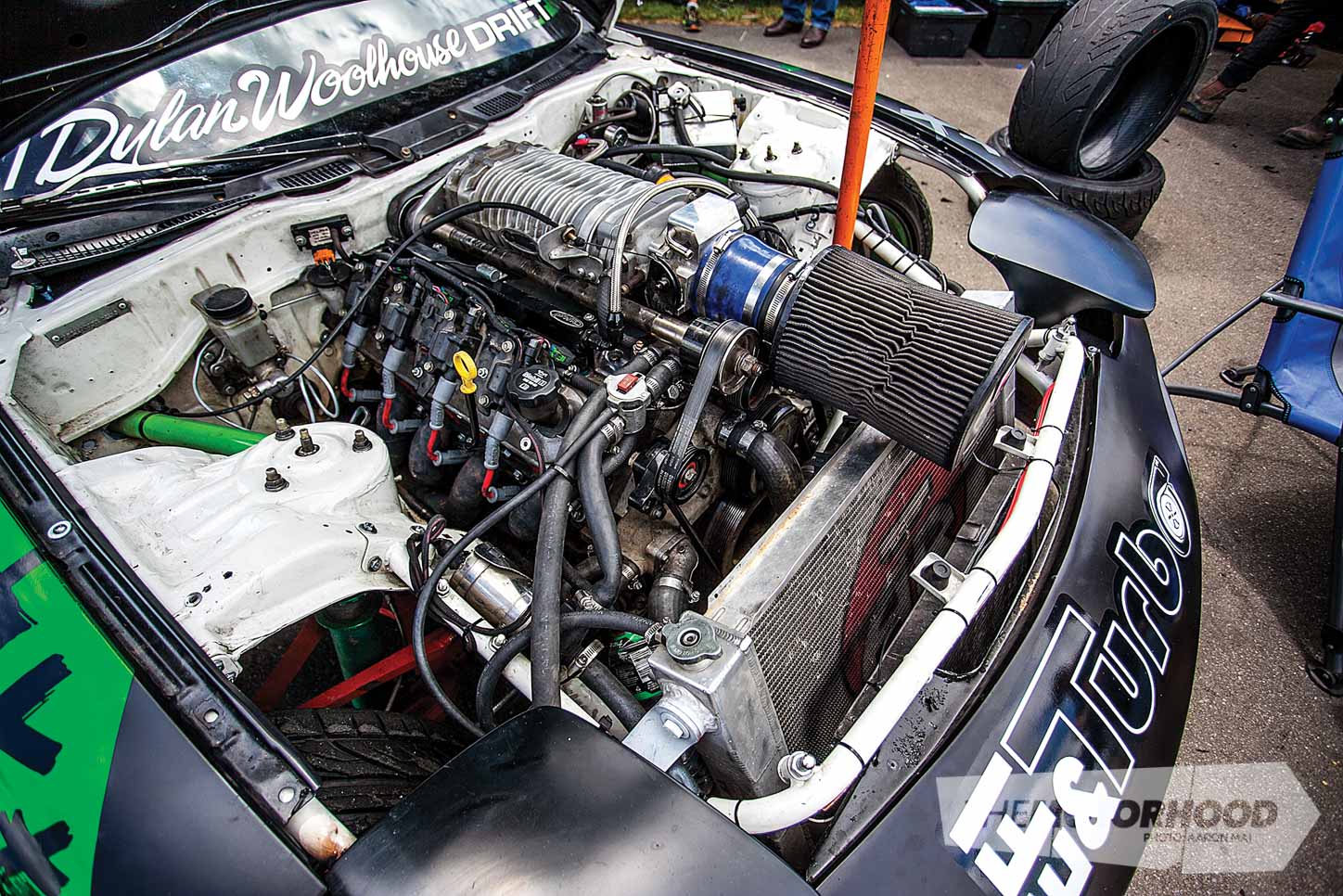
So far the season has been a challenge for the team, with a few very strange occurrences causing mechanical faults and costing valuable seat time. These included a driveshaft failure during day one of round two, which saw the engine and gearbox destroyed in a few short seconds. In a sign of great driver solidarity, the drivers all voted to allow Woolhouse a special dispensation to skip the scheduled qualifying later that day, and qualify on day two if the team could fix the car overnight. A miracle was worked at Efi and Turbo, with the hours of darkness covering an engine build and welding of the bellhousing to put the Jerico four-speed back together.
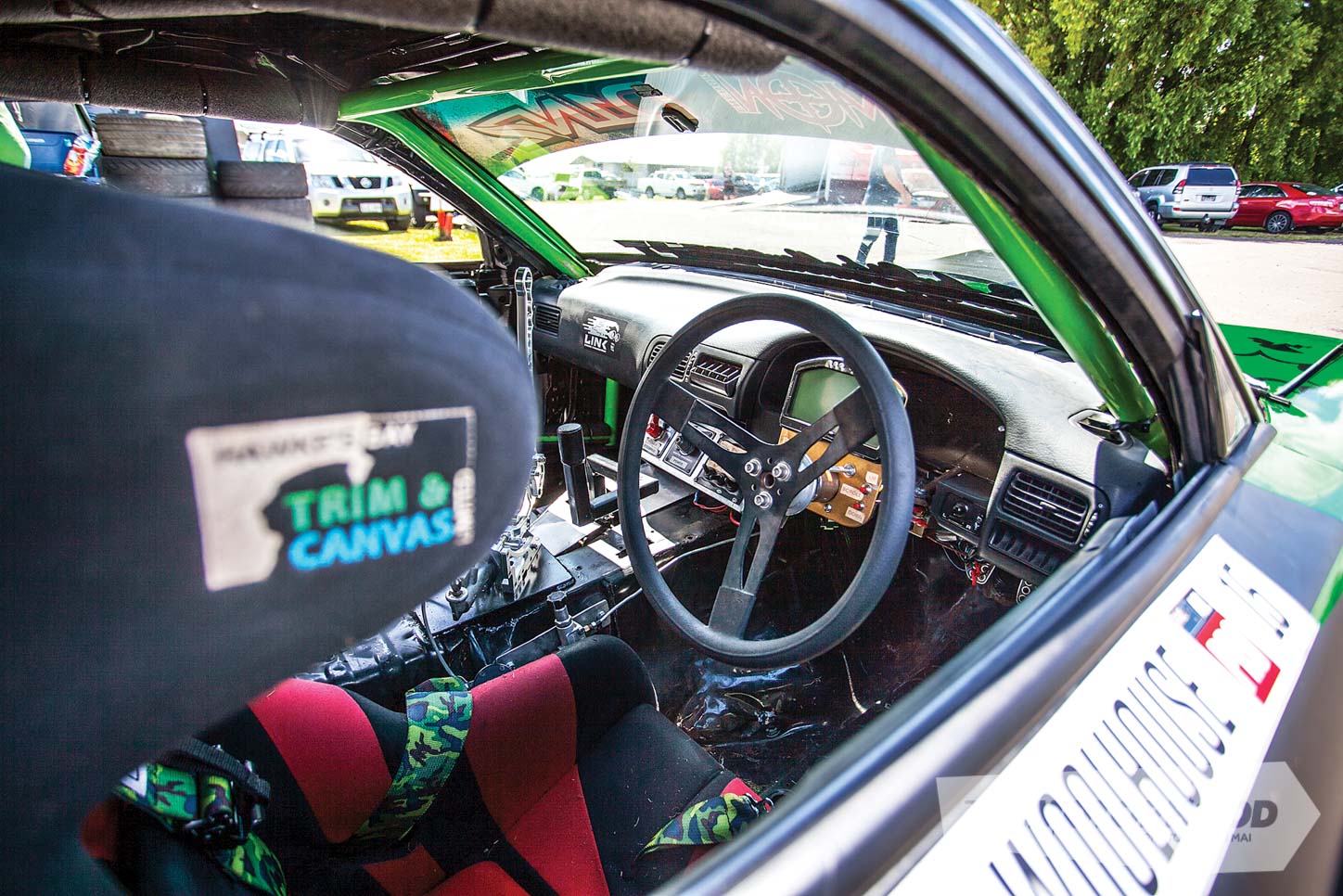
The car made it to the grid come day two, and Dylan managed to qualify 16th equal.
Despite the lack of track time the FD has shown great promise, and was able to hang with some of the big names in the sport, including Dylan’s cousin Fanga — which was a great boost in confidence heading into the newly announced Baypark stadium round.
Dylan had been worried about the twitchiness people often speak of with this chassis, but feels the LS may be eliminating it as he is yet to feel it. Instead he was very complimentary about the way the RX-7 was handling, and the fact he is now much more in touch with where the car is on track.
Looking ahead in the season, Dylan is focused on getting as much seat time as possible, and the only large change to expect to the set up will be a 10.5-inch Winters Quick Change ahead of the round five final at Pukekohe Park Raceway.
But the question does remain, when will we see the much-hyped turbo/supercharged combination? We are waiting, Dylan.








